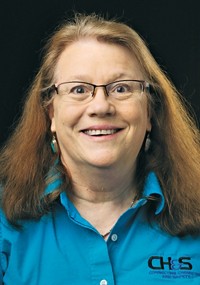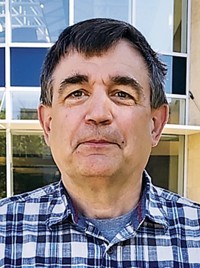Advertisement
Grab your lab coat. Let's get started
Welcome!
Welcome!
Create an account below to get 6 C&EN articles per month, receive newsletters and more - all free.
It seems this is your first time logging in online. Please enter the following information to continue.
As an ACS member you automatically get access to this site. All we need is few more details to create your reading experience.
Not you? Sign in with a different account.
Not you? Sign in with a different account.
ERROR 1
ERROR 1
ERROR 2
ERROR 2
ERROR 2
ERROR 2
ERROR 2
Password and Confirm password must match.
If you have an ACS member number, please enter it here so we can link this account to your membership. (optional)
ERROR 2
ACS values your privacy. By submitting your information, you are gaining access to C&EN and subscribing to our weekly newsletter. We use the information you provide to make your reading experience better, and we will never sell your data to third party members.
ACS News
Building strategic industry-university partnerships
by Mark C. Cesa, Chair, ACS Committee on Science
October 17, 2016
| A version of this story appeared in
Volume 94, Issue 41
Industry looks to universities and other collaborators as a mechanism for innovation and a source of future employees. Meanwhile, universities are increasingly encouraging R&D partnerships with industry to align with funding trends for research that yields practical outcomes.
Recently, the American Chemical Society Committee on Science (ComSci) has focused on the interdisciplinary field of advanced materials. The committee organized an ACS division and journal roundtable and reception in August 2015 (C&EN, Aug. 3, 2015, page 41). Experts from industry and government joined leaders from ACS divisions and journals to discuss the need for interdisciplinary cooperation and collaboration between industry and academia to facilitate creative advances in materials science.
Remarkably, however, the roundtable morphed into a valuable discussion about ways to facilitate industry-university collaborations in general, ensure productive outcomes, and prepare students for careers that encompass both industrial and academic viewpoints.
Taking the trends in funding, research, and education into account, the participants identified several challenges to building and maintaining successful interdisciplinary collaborations. Academic scientists can face hurdles such as funding mechanisms, which sometimes favor single-investigator proposals. In addition, the incentives for government and university researchers to build programs of interdisciplinary research are relatively small. For industrial researchers, interdisciplinary work is far more common because of industry’s innovation needs, but leaders with critical skills are needed to bring interdisciplinary teams together and direct the collaborative efforts.
The participants also noted the characteristics of successful industry-university collaborations and partnerships, both formal and informal. Students, professors, alumni, and industrial scientists and engineers are encouraged to build networks. Informal processes can be built that include awareness-raising for teachers and students about industrial R&D while exploring academic research methods that apply to industry as well. Industrial postdoctoral assignments and internships for students can be vehicles for learning about industrial research, and for generating new projects. More training in business-related skills can be incorporated as part of the academic curriculum, in topics such as intellectual property, commercialization, and ethics.
Frequent communication is an important component of formal structures for successful industrial-academic partnerships. Collaborations require agreement on a framework developed by parties that lead to specific goals and objectives matched to each party’s unique capabilities. A mechanism for publishing results and protecting intellectual property is also essential. University technology transfer offices can facilitate development and implementation of these structures, attending to university researchers’ needs while fulfilling the requirements of the industrial partners.
Building on the outcomes of the roundtable, ComSci has developed a draft set of key principles, a set of actions to build strategic partnerships between industry and universities for R&D innovation.
▸ Objective setting: Develop a shared vision that sets clear mutual objectives for the strategic partnership and the problems to be addressed, including key research challenges. Both sides should understand the challenges and limitations of partners, including conflict-of-interest policies and guidelines.
▸ Leadership: Identify leaders on both sides who are capable of crossing boundaries and building trust between business and academia at both the project management and executive levels.
▸ Type of research: Design a research program that is commercially relevant, precompetitive, and long-term. R&D can span from basic research to technology development. Short-term arrangements can often facilitate long-term strategic partnerships.
▸ Partnership principles: Define, fund, and staff the research jointly, including in-kind contributions, to share risk and incentivize collaboration. The research also should be jointly conducted and directed.
▸ Intellectual property: Establish a clear agreement for the use of resultant intellectual property, and streamline the process to the extent practicable.
▸ Communication: Dissolve boundaries between entities by facilitating frequent communication among researchers and managers, including regular meetings on campus and a shared platform for ideas.
▸ Outcomes: Set timelines and outcome-oriented milestones to track and gauge progress and results.
ComSci encourages ACS members to consider the following actions to build and maintain new, effective collaborations:
▸ Facilitate discussions between students, faculty, and industry about industrial careers and current needs and challenges.
▸ Explore successful collaboration models from the experiences of your colleagues.
▸ Develop courses, training materials, networks, and resources on intellectual property for cross-sector collaboration, working in teams, and communications.
▸ Organize symposia for academic and industrial scientists to work on approaches to multidisciplinary challenges.
In the coming months, ComSci will be assembling a set of case studies in strategic industry-university partnerships, working with ACS committees and divisions. The case studies will be distributed widely for members and stakeholders along with the key principles to help inform and encourage such partnerships.
Views expressed on this page are those of the author and not necessarily those of ACS.






Join the conversation
Contact the reporter
Submit a Letter to the Editor for publication
Engage with us on Twitter